April 1st, 2007
Welcome to what used to be Egypt
Egypt was the center of a great civilization. That was a loooong time ago.
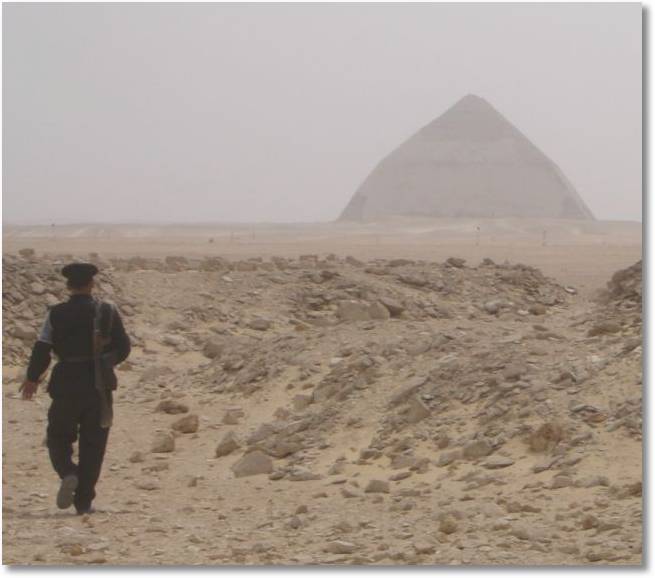
In fact, it is the time factor that makes the ancient Egyptian civilization so impressive. The Roman Empire came into being around two thousand years ago. By then, Egypt had already been going for about four millennia. That’s amazing. While other parts of the world were still hunting with sticks and using stupid-sounding words like “blog,” Egypt was organized, developed, and building architectural achievements that would amaze us to this day.
Modern Egypt is another story: it has problems. Unemployment is around 25%, and those who are employed don’t do so well. The police carry AK-47s and spend most of their time begging for tips, or baksheesh, from tourists. In fact, while maybe not everyone in this country is a beggar or thief, at times it seems like that. The country as a whole gets ridiculous amounts of international aid, mostly from America, so it literally starts from the top.
To enjoy Egypt, the first thing to do is to get the hell out of Cairo as soon as possible. It is a dirty, unbreathable, traffic-clogged, people-clogged, noisy mess. My first reaction upon arriving was “ugh.” The airport is a ways out of the city, and although there is a public bus to downtown, it is not easy to find in the poorly signed airport, and to get there you need to traverse a gauntlet of hasslers trying to offer taxis and hotel rooms, at what will always turn out to be a too-high price. After wandering for a while trying to decipher the Arabic signs and arrows pointing to nowhere, I ended up caving in and paying an exorbitant amount for a taxi. The drivers of course tried to divert me from my hotel to one of their choosing, but I stuck to my guns. After checking in, I decided to do some exploring. I should have just gone to bed.
A white tourist in Egypt stands out like a bulls eye to the hasslers and hustlers and thieves. Within ten seconds of leaving a hotel, you will hear “Yes, hello, where you from? You buy? Good price!” I don’t mind the hard sell, but it bothers me when they lie and cheat. In Turkey, a carpet salesman may misrepresent the value of a rug, but in Cairo a tout will pretend to be a museum official. Many street hustlers will act as if they just want to help and be your friend, then ten minutes later the twist comes as they divert you into a store owned by their buddy, or offer to tour-guide for you, or any one of a million scams. Hustlers will try to charge you extra money for a part of a monument when you’ve already paid the admission for the whole place. They will stand outside your hotel and tell you it is full, to get you into theirs. They will tell you the museum is closed for the next hour, but “Why don’t you come to my restaurant for coffee while you wait?” And don’t even think of getting in a taxi unless you know the proper fare (The Lonely Planet guide book is useful here) and have exact change, because getting change from the drivers is pretty much impossible. These are people with permanent bruises on their foreheads from praying with their head on the ground five times a day for Allah’s help in ripping people off. As in most places, being pious does not translate into being moral.
But is it worth it?
All of this made me at times question whether it was worth coming here. Well, yes, Egypt is worth visiting if you’re in the neighborhood, but be prepared for some hassles. I mean some serious hassles.
If you can tune out modern Egypt, you can find some fascinating leftovers from ancient Egypt. The Egyptian Museum is basically a warehouse of artifacts, some labeled, many not, some still in shipping crates. There are so many things to see, it can be overwhelming and it is amazing to think about just how old everything is. None of the Egyptian art is particularly elegant in comparison to the later Greek, Roman, and Renaissance works. They’re stiff, with a childlike simplicity. Still, there is a certain abstract geometric beauty in the compositions. The drawings are not people; they are symbols of people, arranged in a perfect line, often telling a story. They seem more concerned with detail than reality. If there are two horses, you will see eight hooves, even if the legs have to be twisted in impossible ways to show them. Add to this the feeling that this art comes from one of the first real civilizations, that perhaps it was necessary before Greece or Rome could be possible, and it’s easy to be impressed.
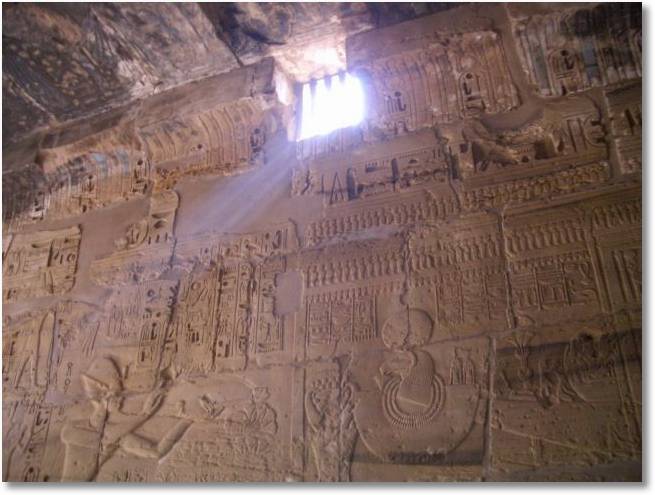
The museum, or rather the garden in front of the museum, is also a wonderful oasis of quiet and calm amidst Cairo’s crazy chaos. Past the security check, but before the ticket office, it is quite pleasant and a great place to sit and read or write. Mostly, that’s because they don’t let the locals in. Well, they do, but with a rigorous screening. Foreign-looking tourists are waved right by, but anyone who looks vaguely Arab gets his ID checked, gets searched, gets interrogated. It’s blatant racial profiling against their own people, but considering the frequency of terrorist attacks against tourists sites here, I’m happy for it.
The Egyptian government realizes how important tourism is to its citizens’ survival, so it goes to great lengths to make tourists feel safe from terrorism (the operative word here is “feel”). This involves large squadrons of “tourist police” in jet-black uniforms, carrying massive machine-guns and flashing yellow-toothed smiles. They stand behind bullet-proof barriers, making me wish I had one. For a few Egyptian Pounds, they’ll take your picture in front of the pyramids. To reach some sites, you need to join a “tourist convoy” with a police escort.
They knew how to build.
Some of the most impressive works don’t fit in the museums, of course. The pyramids, for example. I guess you’ve probably heard of them. They’re big and geometrical and really old. Really old. The desert climate and Egypt’s geological isolation keeps things around long after they would have rotted and blown away or been dismantled anywhere else.
And temples. The Egyptians really knew how to do temples, especially to the south in Upper Egypt. The Nile is lined with gigantic monuments to this pharaoh or that, to this collection of gods or another. The temples at Karnak are phenomenal in their scale. Something along the lines of the Roman Forum, but better preserved because nothing was built on top of them. 134 towering columns designed to look like papyrus plants. Colossal statues of King Ramses the Whatever, an artificial sacred lake. It only takes a little imagination to picture what it must have looked like back in the day.
Luxor Temple, the Valley of the Kings, the Colossi of Memnon, those old Egyptians sure had some major construction projects. And they did it for a long time, so there is a lot left over. It’s hard to represent in pictures just how much there is, because photos just look all yellow, and the scale can’t be captured. With the exception of those supremely photogenic pyramids of Giza, Egypt is another one of those places where a photo doesn’t show what it’s like to be there and see with your own pupils, irises, rods and cones.
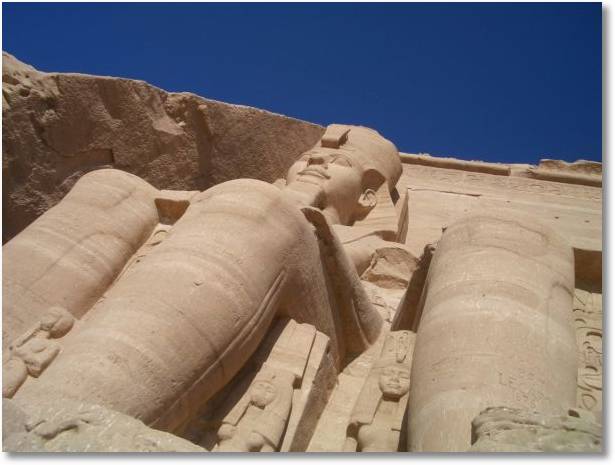
The food
You know that famous Egyptian restaurant in the Upper West Side? No? Oh, that’s right, there isn’t one. Come to think of it, I don’t think I’ve ever seen an Egyptian restaurant in the U.S. I wonder – oh yeah, it’s because Egyptian food sucks. Boring falafels and schwarma that’s been turning on a spit for weeks. I hear camel meat is quite popular, though I’ve never (knowingly) tried it.
Except for a couple trips to the KFC in Cairo, I’ve been pretty much eating vegetarian in Egypt, mostly because I don’t trust the meat. A vegetarian could do all right here subsisting on falafel and koshary, but anyone squeamish about seeing meat prepared should be warned. The butcher shops hang entire cows in the doorway, with the severed head sitting on the sidewalk. The meat is usually skinned by the time it is hung, except the tail, which dangles down like a forgotten fluffy toy that the neighborhood kids come and play with. I’m well aware that the delicious red meat I enjoy comes from a real animal no matter where I am, but after watching those dangling carcasses exposed to the dust and smoke and pollution of Egyptian streets, under the hot desert sun, languishing for hours, I decided to stick with the veggies for a while.
Koshary is a popular dish. It involves a bed of rice, then some cold overcooked noodles (like mini-rigatoni), topped with lentil beans. It tastes just exactly as good as it sounds (and if that sounds good to you, you need to get out more). With enough hot-sauce, it is edible, and it’s a full meal for less than a dollar.
Supposedly there is some decent seafood in Alexandria and along the Sinai coast, but you couldn’t pay me enough to eat a Nile-caught fish.
The desert
I’m realizing lately just how much most places are defined by their geography, and Egypt is one of the more obvious examples. It is striking to see miles and miles of empty sandy nothingness, with two long, long, long and thin strips of green along where the Nile River flows.
The desert is not just sand. It’s not like a beach, where the pretty sand sits and waits for bare feet to make damp impressions. The desert is dust and wind, a mean sun and cold nights, stinging in the eyes and the need to blow your nose every five minutes to clear out the inhaled particles of Saharan shrapnel. It’s mean but beautiful, like Naomi Campbell. The desert goes forever, and it’s always different from angle to angle, from moment to moment. The desert sunset is rightly famous, and just as impossible to capture in pixels.
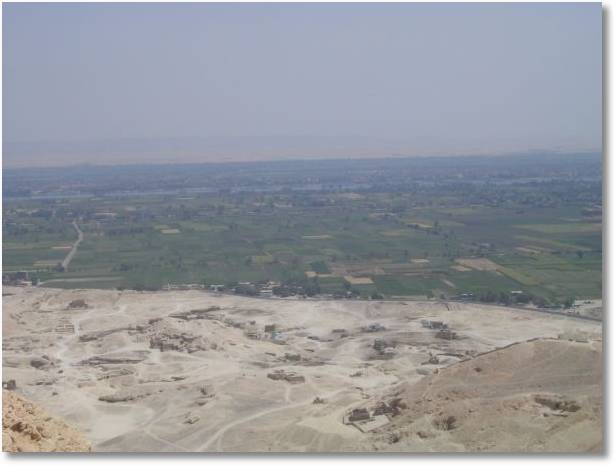
So there ya go
Egypt. It ain’t what it used to be, and that’s a shame. But there’s enough of what it used to be lying around to make it pretty cool, nonetheless. Can’t say I loved it, but I’m glad I stopped by.
April 22nd, 2007
Bangkok
Bangkok is a cool city. The new parts remind me of Miami (mainland Miami, that is, not Miami Beach). Very flat, very hot, full of suped-up cars, and a 7-Eleven on every corner. It's much more modern and developed than I expected, and yet everything is still really cheap, a combination that makes it great for someone traveling for a long time.
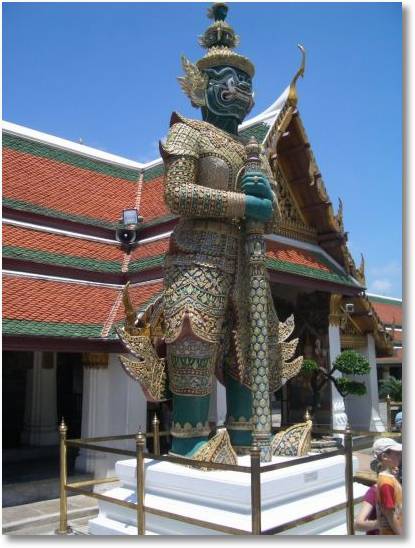 The older part of the city is more run-down but more interesting from a tourist perspective. There are some nice Buddhist temples, a museum I haven't made it too yet, and a river you can ferry across for nine cents.
The older part of the city is more run-down but more interesting from a tourist perspective. There are some nice Buddhist temples, a museum I haven't made it too yet, and a river you can ferry across for nine cents.
The old center is also where the "tourist ghetto" is. It's where there are a lot of cheap hotels and some western-style restaurants. It attracts a certain demographic of people who call themselves "backpackers." These are folks who, with traveling as an excuse, spend a year without showering and doing lots of drugs. Basically long-haired hippies without a cause. I find myself looking for ways to differentiate myself from them (aside from the fact I don't do drugs and would look ridiculous with dredlocks). For one thing, I'm spending (wasting?) my own money, that I earned from seven years of writing software and investing. For another (I tell myself), I already know more of the Thai language than some who have been here six months to a year. I believe that's an important part of experiencing a new place. Even if you only go there for a week or so, learn the words for "hello" and "thank you." That goes a long way. Numbers help, too.
It has been often a challenge when traveling long-term to avoid the feeling of wasting time, especially for an American with a priority on being productive, and when spending money much faster than earning it. I console myself by figuring that as long as I keep writing songs and working on software projects, I'm as productive as I would have been back in Boston. I'm also reminded of a quote I saw recently from Ernest Hemingway:
In going where you have to go, and doing what you have to do, and seeing what you have to see, you dull and blunt the instrument you write with. But I would rather have it bent and dulled and know I had to put it on the grindstone and hammer it into shape and put a whetstone to it, and know that I had something to write about, than to have it bright and shining, and nothing to say, or smooth and well-oiled in the closet, but unused.
(I just finished reading To Have and Have Not, and I still find Hemingway overrated, but I like that quote.)
Sorry for the non-destination-related rambling, but that's a part of the experience of being on the road. Back to Thailand…
I love the food here. In Bangkok, you can find all kinds of food right on the street, where-ever you go. Skewered meat, spring rolls, pad thai, other vaguely recognizable things. Almost everything I tried in Bangkok was cheap and delicious and fresh and safe. It was only in the tourist-oriented spots where it became a little sketchy. I do suspect I had some bad chicken-on-a-stick in Koh Tao, leading to a few days of upset stomach (I'll spare you the details.)
Bangkok, and Thailand in general, has a bit of a sleazy reputation as a destination for so-called "sex-tourism," and there is certainly some of that around, often in public display. In addition to the ubiquitous girly-bars (essentially brothels), it is common to see what are known as "Nana couples," which consist of an older white man with a young pretty Thai woman, walking around town. It's not clear if this is a weekend arrangement or a more permanent relationship. Probably both types exist. It is sad that for these women – girls, really – that's the one of the few ways they have to improve their lives. I hear the government has cracked down recently and a rising economy has presented better opportunities for Thais, so hopefully the situation will be improving in the future.
One of Thailand's assets for building the future is its natural beauty. Down south, the water off both coasts is sprinkled with islands. I visited three: Koh Tao, Koh Samui, and Koh Pha-Ngan. (In case you haven't guessed, Koh means "island.") These three islands have all become tourist traps to an extent, but in very different ways.
Koh Tao
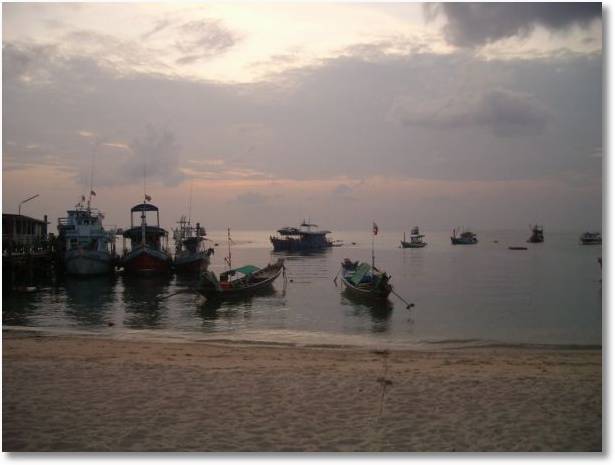
Koh Tao is the divers' destination. That's what I did there, that's what everyone does there, that's basically all there is to do there: eat, sleep, and scuba dive. And the eating and sleeping didn't work out so well: that's where I got the bad chicken, I think, and I was in tiny little bungalow with no breeze and a noisy fan, making sleeping difficult. Scuba is a blast, though. The idea of being able to breath under water is such a foreign concept that most of the lessons I took involved just getting used to breathing normally. Once the initial nerves are overcome (and the chicken-on-a-stick has been, ahem, eliminated), it's easy to relax and enjoy the clear views of undersea life. There really is an entire world to see in every square inch.
So now I can proudly say you're reading the rambling writings of a freshly certified PADI open-water scuba diver.
Koh Samui
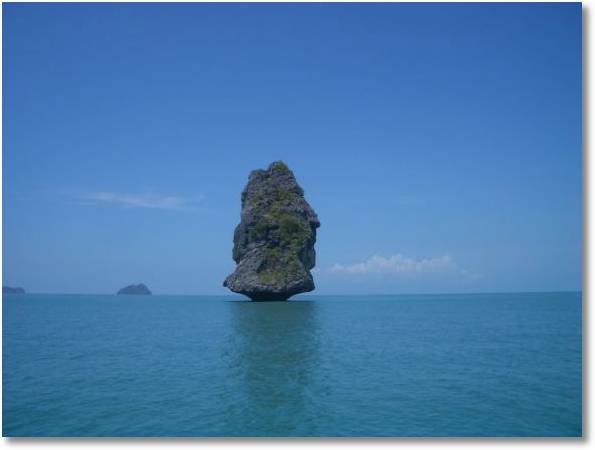
Koh Samui has beautiful beaches. It's the largest Thai island and the one with the most infrastructure, so if you're looking for Italian food, you can find it. If you're looking for a luxury resort, you can find it. If you're looking for a toilet that flushes – well, this is still Thailand, so don't get your hopes up.
Samui is the most expensive place I went in Thailand, but it's still cheap by US standards, so it's a nice vacation destination, though beaches of the same quality can probably be found closer to home.
For $50 I did take a nice day-long speedboat tour of Angthong Marine National Park, which is an archipelago of about 40 ancient islands, formed from limestone and rising from the sea in strange formations. The tour involved snorkeling, kayaking, breakfast, a delicious lunch at a small fishermen's village on one of the islands, and some general frolicking on the beach. Oh yeah, and pineapples. Mmmm, pineapples… That tour was probably the highlight of my southern Thailand excursion.
Koh Pha-Ngan
This island is known as the party island. Every full moon, the place gets jammed with revelers and crazies from all over for a night of drunken mayhem. When I was there, it was nowhere near the full moon, but I vaguely and fuzzily remember there was still some active nightlife.
The downside is that during the day there is not much to do. The beach in the main town, Hat Rin, is disgustingly dirty. In the sixties, hippies (or at least the ones on TV) played good music and protested for civil rights. Nowadays they leave cigarette butts all over the beach, so the sand here is pretty ugh-y. And they listen to something called House Music, which has now surpassed Reggaeton in my opinion as the worst music ever. From what I can gather, it involves a monotonous thudding bass-line, with occasionally a random black woman screaming something over it. I'm pretty sure every song is in the key of F. I guess there are subtle differences between House and Techno and Drum'n'Bass and blah blah blah who cares it all sucks.
I suppose Koh Pha-Ngan was worth a visit just to see it, and the Full Moon Party would be something to experience, I bet. Watch out for that Thai whiskey, though!
And on
Back in Bangkok for a few days, then on to a final stop in Australia before returning to the good ole USA.
Thailand has been a lot of fun.
May 22nd, 2007
Australia is a magical place where the sun never stops shining, people smile all the time, little birds sing Waltzing Matilda, and kangaroos hop merrily down the streets. The beer is ice-cold and flows like a river. The locals are universally friendly toward Americans and see us as the saviors of the world that we are, except I think they spell it saviours.
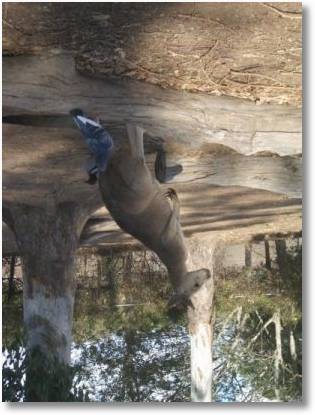 The food is cuisine from all over the world, but Australianized, and it benefits from quality local ingredients. Australian beef is famous, and rightly so, and they’ve really embraced the concept of putting meat, in its various forms, inside of pie crusts. Steak and bacon pie, sausage and cheese pie, curry chicken pie, you name it. It’s all very healthy, as long as you consider fat one of the food groups. The locals eat the fatpies with ketchup. They call ketchup tomato sauce, except they don’t say tomato sauce, they say “toe-mah-toe sauce.” Practice that, and really enunciate those Ts: “toe-mah-toe sauce.” Keep working on it, you’re getting there. What we call tomato sauce they call pasta sauce, I think even if it’s on a pizza (or maybe then it becomes pizza sauce). Barbecue sauce is the same as we have, and mustard, but hot dogs are called “American hot dogs.”
The food is cuisine from all over the world, but Australianized, and it benefits from quality local ingredients. Australian beef is famous, and rightly so, and they’ve really embraced the concept of putting meat, in its various forms, inside of pie crusts. Steak and bacon pie, sausage and cheese pie, curry chicken pie, you name it. It’s all very healthy, as long as you consider fat one of the food groups. The locals eat the fatpies with ketchup. They call ketchup tomato sauce, except they don’t say tomato sauce, they say “toe-mah-toe sauce.” Practice that, and really enunciate those Ts: “toe-mah-toe sauce.” Keep working on it, you’re getting there. What we call tomato sauce they call pasta sauce, I think even if it’s on a pizza (or maybe then it becomes pizza sauce). Barbecue sauce is the same as we have, and mustard, but hot dogs are called “American hot dogs.”
The east coast is miles and miles of perfect beaches. Perfect for surfing, perfect for diving, perfect for getting caught in a rip current and drowning, perfect for hiking alongside; you know, all the staples of a sunny vacation. I learned to surf, did a whole lot of hiking, and went dolphin feeding. I passed on the diving and the watery death due to lack of time. Next time, for sure.
Sydney is the most beautiful city I’ve been to in the entire hemisphere. It’s in an ideal setting for a city. The meandering harbor bisects the downtown, crossed by the famous Harbour Bridge and punctuated by the even famouser Opera House. It’s a young energetic place, great for walking around and girl – I mean people – watching. It’s a multicultural place, as the gateway to the rest of Australia, mostly from Asia but from all over. It’s too bad about all the English people, though.
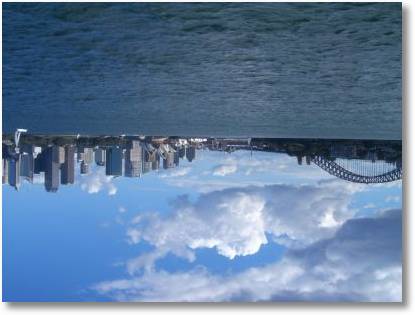
Brisbane is one of those little big cities. With a million and a half residents, it somehow still feels like Providence, but without the mafia. I rented a bike and rode for miles – I mean kilometers – by the Brisbane river, along both banks in both directions. I like rivers, because, you know, you can ride bikes along them for miles – I mean kilometers. I saw a good acoustic musician playing cover tunes at a local Brisbane pub and I’m thinking of stealing some of his material.
To really see Australia, you need more than the three weeks I spent. You also need several suitcases full of money. It’s an expensive place to visit, not only because the American dollar is weaker than Pauly Shore in Biosphere, but also because the distances involved are so long. It’s a huge country, with a lot of empty space. That, and they make you pay for ketchup with your french fries (which they call “chips”). Can you believe that? They make you pay for ketchup! I was shocked when I found that one out. How anti-American. I don’t care about free university education. Screw universal health care. I want free ketchup!
I’m pretty sure I’m coming back to Australia, because there is a lot more to see. I never got to the Great Barrier Reef. I know, you can’t go to Australia and not visit the Great Barrier Reef. Well, I did. I also didn’t go to Melbourne or Uluru or the Outback, so I’ll be back, singing along with the birds and hopping along with the roos and wallabies. And next time, I’m bringing my own damn toe-mah-toe sauce.
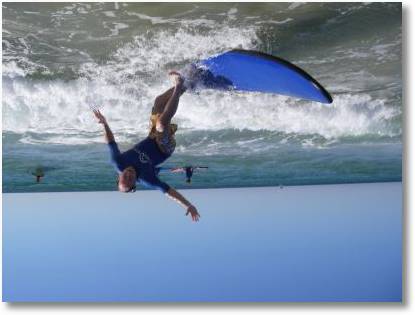
PS: Sorry about the upside-down pictures. My camera is made for the northern hemisphere.





 The older part of the city is more run-down but more interesting from a tourist perspective. There are some nice Buddhist temples, a museum I haven't made it too yet, and a river you can ferry across for nine cents.
The older part of the city is more run-down but more interesting from a tourist perspective. There are some nice Buddhist temples, a museum I haven't made it too yet, and a river you can ferry across for nine cents.

 The food is cuisine from all over the world, but Australianized, and it benefits from quality local ingredients. Australian beef is famous, and rightly so, and they’ve really embraced the concept of putting meat, in its various forms, inside of pie crusts. Steak and bacon pie, sausage and cheese pie, curry chicken pie, you name it. It’s all very healthy, as long as you consider fat one of the food groups. The locals eat the fatpies with ketchup. They call ketchup tomato sauce, except they don’t say tomato sauce, they say “toe-mah-toe sauce.” Practice that, and really enunciate those Ts: “toe-mah-toe sauce.” Keep working on it, you’re getting there. What we call tomato sauce they call pasta sauce, I think even if it’s on a pizza (or maybe then it becomes pizza sauce). Barbecue sauce is the same as we have, and mustard, but hot dogs are called “American hot dogs.”
The food is cuisine from all over the world, but Australianized, and it benefits from quality local ingredients. Australian beef is famous, and rightly so, and they’ve really embraced the concept of putting meat, in its various forms, inside of pie crusts. Steak and bacon pie, sausage and cheese pie, curry chicken pie, you name it. It’s all very healthy, as long as you consider fat one of the food groups. The locals eat the fatpies with ketchup. They call ketchup tomato sauce, except they don’t say tomato sauce, they say “toe-mah-toe sauce.” Practice that, and really enunciate those Ts: “toe-mah-toe sauce.” Keep working on it, you’re getting there. What we call tomato sauce they call pasta sauce, I think even if it’s on a pizza (or maybe then it becomes pizza sauce). Barbecue sauce is the same as we have, and mustard, but hot dogs are called “American hot dogs.”


